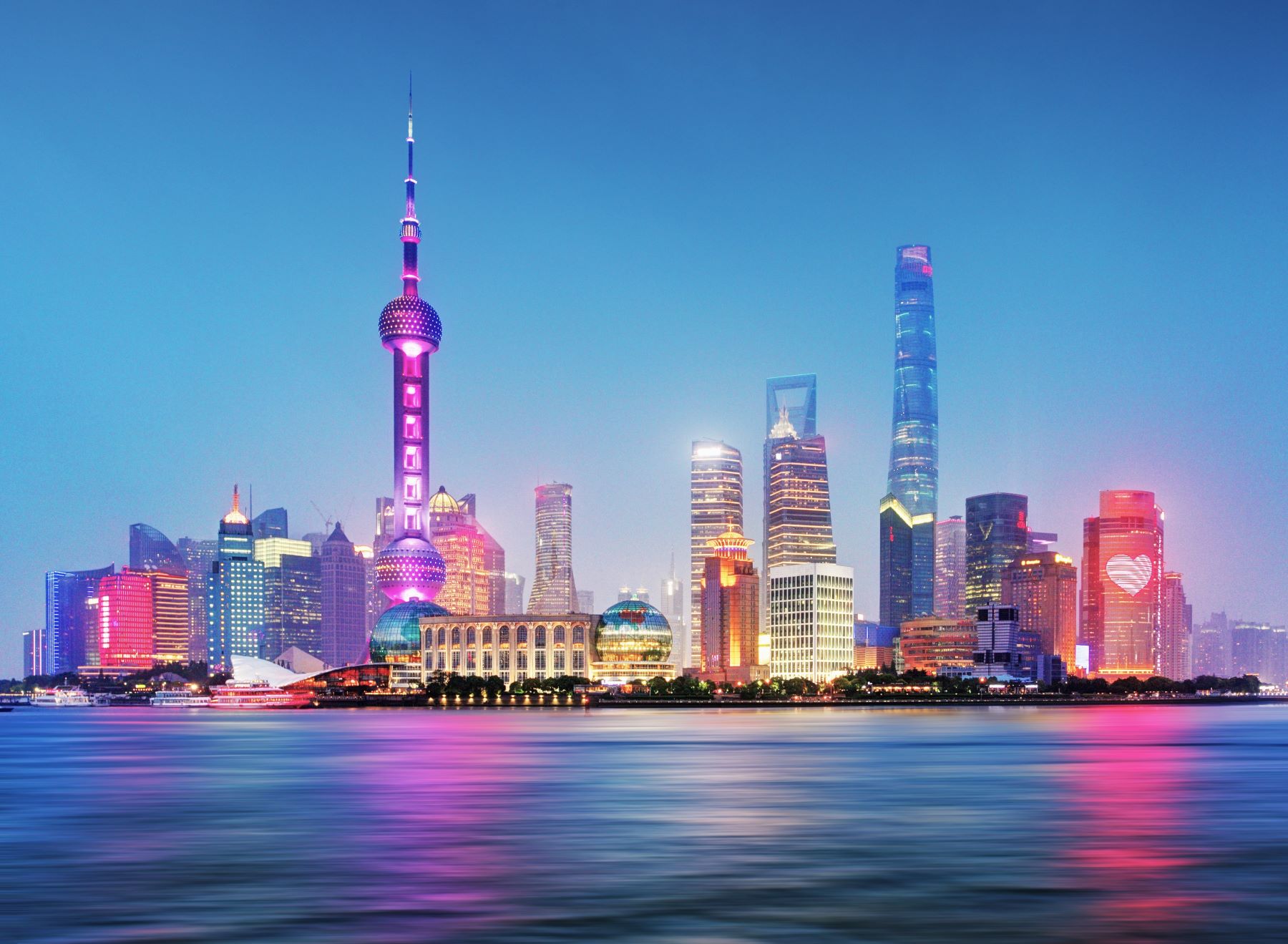 China has been an economic powerhouse in recent decades – a powerhouse that has helped to drive the world economy through trade and both inward and outward investment. At the same time, its low-priced exports have helped to dampen world inflation. But is all this changing? Is China, to use President Biden’s words, a ‘ticking time bomb’?
China has been an economic powerhouse in recent decades – a powerhouse that has helped to drive the world economy through trade and both inward and outward investment. At the same time, its low-priced exports have helped to dampen world inflation. But is all this changing? Is China, to use President Biden’s words, a ‘ticking time bomb’?
China’s economic growth rate is slowing, with the quarterly growth in GDP falling from 2.2% in Q1 this year to 0.8% in Q2. Even though public-sector investment rose by 8.1% in the first six months of this year, private-sector investment fell by 0.2%, reflecting waning business confidence. And manufacturing output declined in August. But, despite slowing growth, the Chinese government is unlikely to use expansionary fiscal policy because of worries about growing public-sector debt.
The property market
 One of the biggest worries for the Chinese economy is the property market. The annual rate of property investment fell by 20.6% in June this year and new home prices fell by 0.2% in July (compared with June). The annual rate of price increase for new homes was negative throughout 2022, being as low as minus 1.6% in November 2022; it was minus 0.1% in the year to July 2023, putting new-home prices at 2.4% below their August 2021 level. However, these are official statistics. According to the Japan Times article linked below, which reports Bloomberg evidence, property agents and private data providers report much bigger falls, with existing home prices falling by at least 15% in many cities.
One of the biggest worries for the Chinese economy is the property market. The annual rate of property investment fell by 20.6% in June this year and new home prices fell by 0.2% in July (compared with June). The annual rate of price increase for new homes was negative throughout 2022, being as low as minus 1.6% in November 2022; it was minus 0.1% in the year to July 2023, putting new-home prices at 2.4% below their August 2021 level. However, these are official statistics. According to the Japan Times article linked below, which reports Bloomberg evidence, property agents and private data providers report much bigger falls, with existing home prices falling by at least 15% in many cities.
Falling home prices have made home-owners poorer and this wealth effect acts as a brake on spending. The result is that, unlike in many Western countries, there has been no post-pandemic bounce back in spending. There has also been a dampening effect on local authority spending. During the property boom they financed a proportion of their spending by selling land to property developers. That source of revenue has now largely dried up. And as public-sector revenues have been constrained, so this has constrained infrastructure spending – a major source of growth in China.
The government, however, has been unwilling to compensate for this by encouraging private investment and has tightened regulation of the financial sector. The result has been a decline in new jobs and a rise in unemployment, especially among graduates, where new white collar jobs in urban areas are declining. According to the BBC News article linked below, “In July, figures showed a record 21.3% of jobseekers between the ages of 16 and 25 were out of work”.
Deflation
 The fall in demand has caused consumer prices to fall. In the year to July 2023, they fell by 0.3%. Even though core inflation is still positive (0.8%), the likelihood of price reductions in the near future discourages spending as people hold back, waiting for prices to fall further. This further dampens the economy. This is a problem that was experienced in Japan over many years.
The fall in demand has caused consumer prices to fall. In the year to July 2023, they fell by 0.3%. Even though core inflation is still positive (0.8%), the likelihood of price reductions in the near future discourages spending as people hold back, waiting for prices to fall further. This further dampens the economy. This is a problem that was experienced in Japan over many years.
Despite slowing economic growth, Chinese annual growth in GDP for 2023 is still expected to be around 4.5% – much lower than the average rate for 9.5% from 1991 to 2019, but considerably higher than the average of 1.1% forecast for 2023 for the G7 countries. Nevertheless, China’s exports fell by 14.5% in the year to July 2023 and imports fell by 12.5%. The fall in imports represents a fall in exports to China from the rest of the world and hence a fall in injections to the rest-of-the-world economy. Currently China’s role as a powerhouse of the world has gone into reverse.
Articles
Questions
- Using PowerPoint or Excel, plot the growth rate of Chinese real GDP, real exports and real imports from 1990 to 2024 (using forecasts for 2023 and 2024). Use data from the IMF’s World Economic Outlook database. Comment on the figures.
- Explain the wealth effect from falling home prices.
- Why may official figures understate the magnitude of home price deflation?
- Explain the foreign trade multiplier and its relevance to other countries when the volume of Chinese imports changes. What determines the size of this multiplier for a specific country?
- How does the nature of the political system in China affect the likely policy response to the problems identified in this blog?
- Is there any good news for the rest of the world from the slowdown in the Chinese economy?
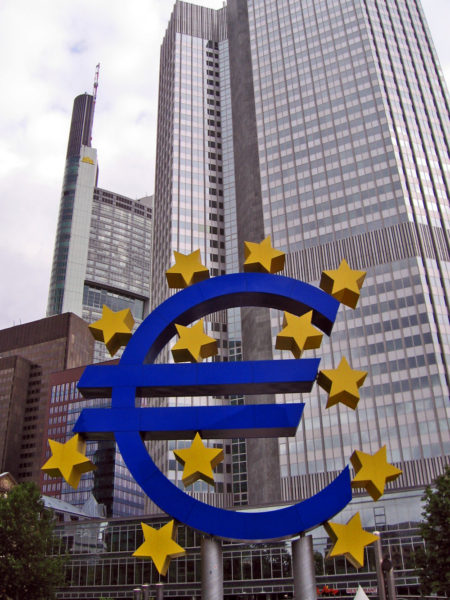 Growth in the eurozone has slowed. The European Central Bank (ECB) now expects it to be 1.1% this year; in December, it had forecast a rate of 1.7% for 2019. Mario Draghi, president of the ECB, in his press conference, said that ‘the weakening in economic data points to a sizeable moderation in the pace of the economic expansion that will extend into the current year’. Faced with a slowing eurozone economy, the ECB has announced further measures to stimulate economic growth.
Growth in the eurozone has slowed. The European Central Bank (ECB) now expects it to be 1.1% this year; in December, it had forecast a rate of 1.7% for 2019. Mario Draghi, president of the ECB, in his press conference, said that ‘the weakening in economic data points to a sizeable moderation in the pace of the economic expansion that will extend into the current year’. Faced with a slowing eurozone economy, the ECB has announced further measures to stimulate economic growth.
First it has indicated that interest rates will not rise until next year at the earliest ‘and in any case for as long as necessary to ensure the continued sustained convergence of inflation to levels that are below, but close to, 2% over the medium term’. The ECB currently expects HIPC inflation to be 1.2% in 2019. It was expected to raise interest rates later this year – probably by the end of the summer. The ECB’s main refinancing interest rate, at which it provides liquidity to banks, has been zero since March 2016, and so there was no scope for lowering it.
 Second, although quantitative easing (the asset purchase programme) is coming to an end, there will be no ‘quantitative tightening’. Instead, the ECB will purchase additional assets to replace any assets that mature, thereby leaving the stock of assets held the same. This would continue ‘for an extended period of time past the date when we start raising the key ECB interest rates, and in any case for as long as necessary to maintain favourable liquidity conditions and an ample degree of monetary accommodation’.
Second, although quantitative easing (the asset purchase programme) is coming to an end, there will be no ‘quantitative tightening’. Instead, the ECB will purchase additional assets to replace any assets that mature, thereby leaving the stock of assets held the same. This would continue ‘for an extended period of time past the date when we start raising the key ECB interest rates, and in any case for as long as necessary to maintain favourable liquidity conditions and an ample degree of monetary accommodation’.
Third, the ECB is launching a new series of ‘quarterly targeted longer-term refinancing operations (TLTRO-III), starting in September 2019 and ending in March 2021, each with a maturity of two years’. These are low-interest loans to banks in the eurozone for use for specific lending to businesses and households (other than for mortgages) at below-market rates. Banks will be able to borrow up to 30% of their eligible assets (yet to be fully defined). These, as their acronym suggests, are the third round of such loans. The second round was relatively successful. As the Barron’s article linked below states:
Banks boosted their long-term borrowing from the ECB by 70% over the course of the program, although they did not manage to increase their holdings of business loans until after TLTRO II had finished disbursing funds in March 2017.
Whether these measures will be enough to raise growth rates in the eurozone depends on a range of external factors affecting aggregate demand. Draghi identified three factors which could have a negative effect.
- Brexit. The forecasts assume an orderly Brexit in accordance with the withdrawal deal agreed between the European Commission and the UK government. With the House of Commons having rejected this deal twice, even though it has agreed that there should not be a ‘no-deal Brexit’, this might happen as it is the legal default position. This could have a negative effect on the eurozone economy (as well as a significant one on the UK economy). Even an extension of Article 50 could create uncertainty, which would also have a negative effect
- Trade wars. If President Trump persists with his protectionist policy, this will have a negative effect on growth in the eurozone and elsewhere.
- China. Chinese growth has slowed and this dampens global growth. What is more, China is a major trading partner of the eurozone countries and hence slowing Chinese growth impacts on the eurozone through the international trade multiplier. The ECB has taken this into account, but if Chinese growth slows more than anticipated, this will further push down eurozone growth.
Then there are internal uncertainties in the eurozone, such as the political and economic uncertainty in Italy, which in December 2018 entered a recession (2 quarters of negative economic growth). Its budget deficit is rising and this is creating conflict with the European Commission. Also, there are likely to be growing tensions within Italy as the government raises taxes.
Faced with these and other uncertainties, the measures announced by Mario Draghi may turn out not to be enough. Perhaps in a few months’ there may have to be a further round of quantitative easing.
Articles
- ECB statement following policy meeting
Reuters, Larry King (7/3/19)
- European Central Bank acts to boost struggling eurozone
BBC News, Andrew Walker (7/3/19)
- The European Central Bank Tries to Avoid Repeating Past Mistakes
Barron’s, Matthew C. Klein (8/3/19)
- ECB pushes back rate hike plans, announces fresh funding for banks
CNBC, Silvia Amaro (7/3/19)
- Why the ECB Followed the Fed’s Flip-Flopping
Bloomberg, Mohamed A. El-Erian (7/3/19)
- Central Banks Don’t Have the Answer and Markets Know It
Bloomberg, Robert Burgess (7/3/19)
- Missing out on monetary normalisation
OMFIF, David Marsh (12/4/19)
- The ECB is attempting to get ahead of event
Financial Times, The editorial board (8/3/19)
- Explainer: What is the fuss about European Central Bank TLTRO loans?
Reuters, Balazs Koranyi (4/3/19)
Videos
ECB publications
Questions
- Investigate the history of quantitative easing and its use by the Fed, the Bank of England and the ECB. What is the current position of the three central banks on ‘quantitative tightening’, whereby central banks sell some of the stock of assets they have purchased during the process of quantitative easing or not replace them when they mature?
- What are TLTROs and what use of them has been made by the ECB? Do they involve the creation of new money?
- What will determine the success of the proposed TLTRO III scheme?
- If the remit of central banks is to keep inflation on target, which in the ECB’s case means below 2% HIPC inflation but close to it over the medium term, why do people talk about central banks using monetary policy to revive a flagging economy?
- What is ‘forward guidance’ by central banks and what determines its affect on aggregate demand?
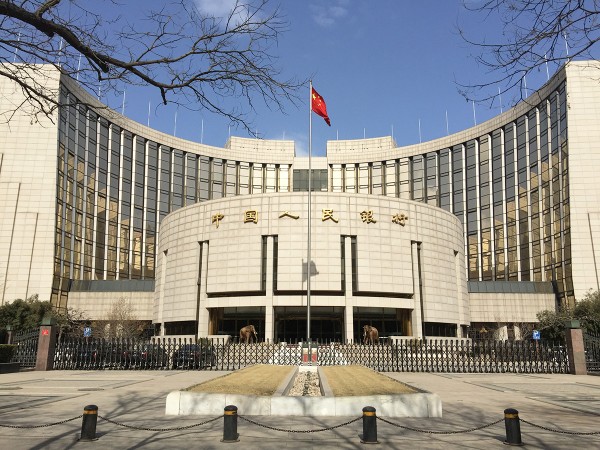 In recent months the Chinese central bank (the People’s Bank of China) has taken a number of measures to boost aggregate demand and arrest the slowing economic growth rate. Such measures have included quantitative easing, cuts in interest rates, a devaluation of the yuan and daily injections of liquidity through open-market operations. It has now announced that from 1 March it will reduce the reserve requirement ratio (RRR) for banks by a half percentage point.
In recent months the Chinese central bank (the People’s Bank of China) has taken a number of measures to boost aggregate demand and arrest the slowing economic growth rate. Such measures have included quantitative easing, cuts in interest rates, a devaluation of the yuan and daily injections of liquidity through open-market operations. It has now announced that from 1 March it will reduce the reserve requirement ratio (RRR) for banks by a half percentage point.
The RRR is the percentage of liabilities that banks are required to hold in the form of cash reserves – money that could otherwise have been used for lending. This latest move will bring the compulsory ratio for the larger banks down from 17.5% to 17%. This may sound like only a small reduction, but it will release some ¥650bn to ¥690bn (around $100bn) of reserves that can be used for lending.
The cut from 17.5% to 17% is the fourth this year. Throughout 2014 and 2015 it was stable at 20%.
The hope is that this lending will not only help to boost economic growth but also stimulate demand for the consumption of services. The measure can thus be seen as part of a broader strategy as the authorities seek to re-balance the economy away from its reliance on basic manufacturing towards a more diversified economy. It is also hoped that the extra demand will help to boost jobs and thus provide more opportunities for people laid off from traditional manufacturing industries.
It is expected that further reductions in the RRR will be announced later in the year – perhaps a further 1.5 to 2 percentage points.
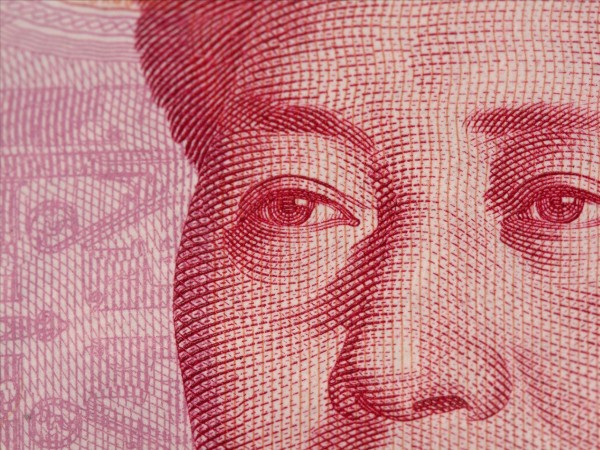 But what will be the effect of the releasing of reserves? Will the boost be confined to $100bn or will there be a money multiplier effect? It is certainly hoped by the authorities that this will stimulate the process of credit creation. But how much credit is created depends not just on banks’ willingness to lend, but also on the demand for credit. And that depends very much on expectations about future rates of economic growth.
But what will be the effect of the releasing of reserves? Will the boost be confined to $100bn or will there be a money multiplier effect? It is certainly hoped by the authorities that this will stimulate the process of credit creation. But how much credit is created depends not just on banks’ willingness to lend, but also on the demand for credit. And that depends very much on expectations about future rates of economic growth.
One issue that concerns both the Chinese and overseas competitors is the effect of the measure on the exchange rate. By increasing the money supply, the measure will put downward pressure on the exchange rate as it will boost the demand for imports.
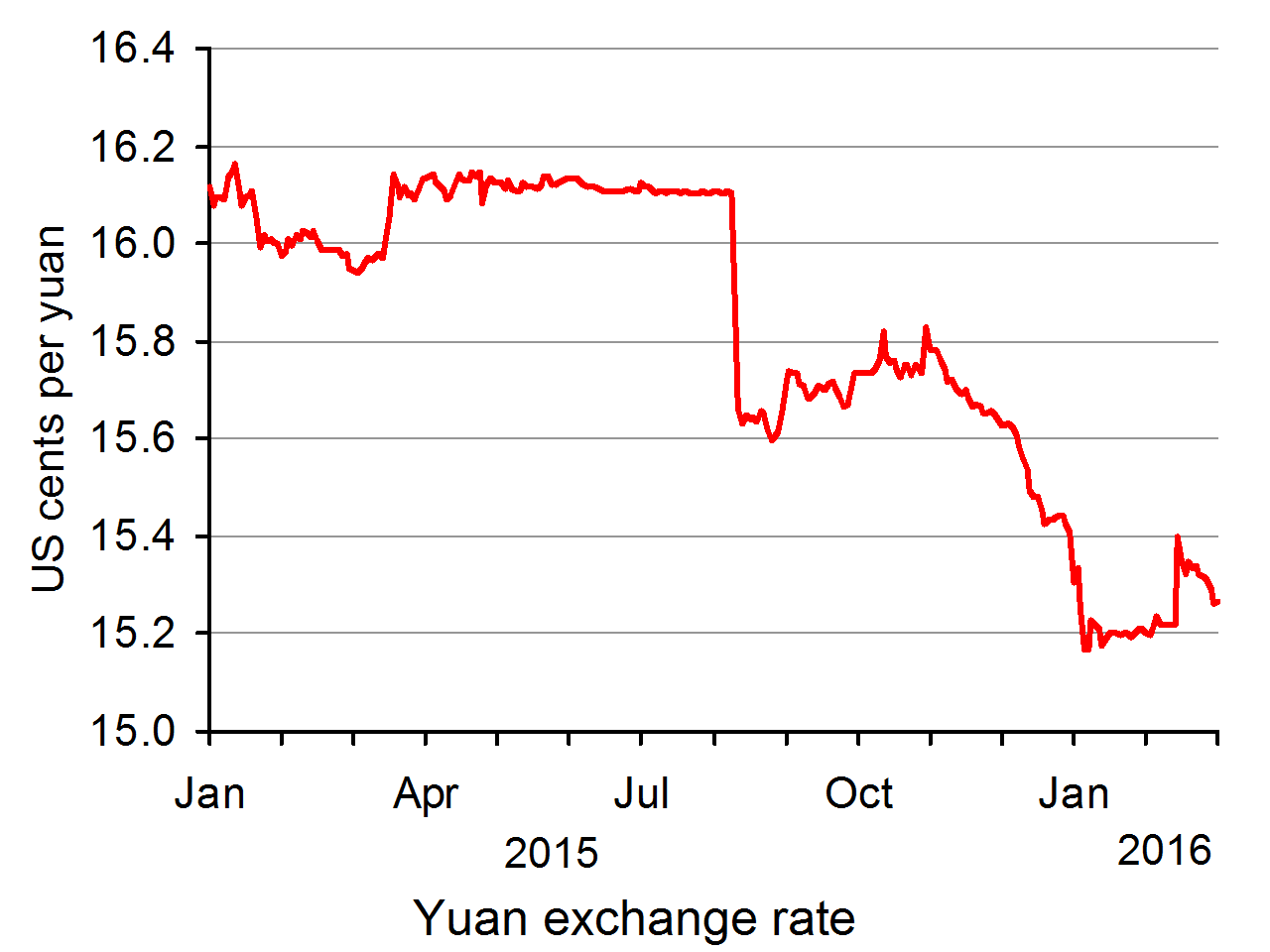 The Chinese authorities have been intervening in the foreign exchange market to arrest a fall in the yuan (¥) because of worries about capital outflows from China. The yuan was devalued by 2.9% in August 2015 from approximately ¥1 = ¢16.11 to approximately ¥1 = ¢15.64 (see chart) and after a modest rally in November 2015 it began falling again, with the Chinese authorities being unwilling to support it at the November rate. By January 2016, it had fallen a further 2.8% to approximately ¢15.20 (click here for a PowerPoint file of the chart).
The Chinese authorities have been intervening in the foreign exchange market to arrest a fall in the yuan (¥) because of worries about capital outflows from China. The yuan was devalued by 2.9% in August 2015 from approximately ¥1 = ¢16.11 to approximately ¥1 = ¢15.64 (see chart) and after a modest rally in November 2015 it began falling again, with the Chinese authorities being unwilling to support it at the November rate. By January 2016, it had fallen a further 2.8% to approximately ¢15.20 (click here for a PowerPoint file of the chart).
But despite the possible downward pressure on the yuan from the cut in the reserve requirement, it will probably put less downward pressure than a cut in interest rates. This is because an interest rate cut has a bigger effect on capital outflows as it directly reduces the return on deposits in China. The central bank had already cut its benchmark 1-year lending rate from 6% to 4.35% between November 2014 and October 2015 and seems reluctant at the current time to cut it further.
China central bank resumes easing cycle to cushion reform pain Reuters, Pete Sweeney (29/2/16)
China cuts reserve requirements for banks to boost economy PressTV (29/2/16)
China Moves to Bolster Lending by Easing Banks’ Reserve Ratio New York Times, Neil Gough (29/2/16)
Economists React: China’s ‘Surprise’ Bank Reserve Cut Wall Street Journal (29/2/16)
 China Cuts Banks’ Reserve Requirement Ratio Bloomberg, Enda Curran (29/2/16)
China Cuts Banks’ Reserve Requirement Ratio Bloomberg, Enda Curran (29/2/16)
 China Reserve-Ratio Cut Signals Growth Is Priority Over Yuan Bloomberg, Andrew Lynch (29/2/16)
China Reserve-Ratio Cut Signals Growth Is Priority Over Yuan Bloomberg, Andrew Lynch (29/2/16)
China reserve ratio cut not a signal of impending large-scale stimulus: Xinhua Reuters, Samuel Shen and John Ruwitch (2/3/16)
China injects cash to boost growth and counter capital outflows Financial Times, Gabriel Wildau (29/2/16)
China’s Economic Policy Akin To Pushing On A String Seeking Alpha, Bruce Wilds (2/3/16)
China cuts banks’ reserve ratio for fifth time in a year: Why and what’s next Channel NewsAsia, Tang See Kit, (1/3/16)
Questions
- Explain what is mean by the required reserve ratio (RRR).
- Explain how credit creation takes place.
- What will determine the amount of credit creation that will take place as a result of the $100bn of reserves in Chinese banks released for lending by the cut in the RRR from 17.5% to 17%.
- What prompted the recent cuts in the RRR?
- Why may China’s recent monetary policy measures be like pushing on a string?
- Is the reduction in the RRR a purely demand-side measure, or will it have supply-side consequences?
- Explain how different types of monetary policy affect the exchange rate.
- Should other countries welcome the cut in China’s RRR? Explain.
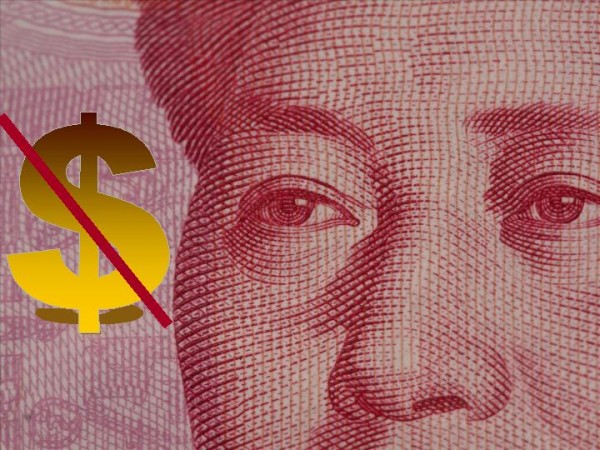 The Chinese economy was, for some time, the beacon of the world economy, posting strong growth and giving a much needed boost to demand in other countries. However, the weakening Chinese economy is now causing serious concerns around the world and not least in China itself.
The Chinese economy was, for some time, the beacon of the world economy, posting strong growth and giving a much needed boost to demand in other countries. However, the weakening Chinese economy is now causing serious concerns around the world and not least in China itself.
China’s stock market on Monday 11th January closed down 5.3%, with the Hong Kong Index down by 2.8%. These falls suggest a continuing downward trajectory this week, following the 10% decline on Chinese markets last week. Today, further falls were caused, at least in part, by uncertainty over the direction of the Chinese currency, the yuan. Volatility in the currency is expected to continue with ongoing depreciation pressures and adding to this is continuing concerns about deflation.
The barrage of bad news on key economic indicators may well mean significant intervention by Chinese authorities to try to avoid its slowest growth in 25 years. However, there are also concerns about China’s ability to manage its economic policy, given recent events. IG’s Angus Nicholson said:
“Global markets are still in the grips of China fears, and it is uncertain whether the Chinese government can do enough to reassure global investors.”
Similar sentiments were echoed by Paul Mackel, head of emerging markets FX research at HSBC:
“Different signals about foreign exchange policy have wrong-footed market participants and we are wary in believing that an immediate calmness will soon emerge.”
Perhaps key to turning this downward trend on its head, will be the Chinese consumers. With a traditionally larger saving ratio than  many Western economies, it may be that this ‘cushion’ will give growth a boost, through the contribution of consumer spending. As we know, aggregate demand comprises consumption, investment, government spending and net exports (AD = C + I + G + X – M). Consumer spending (C) increased from 50.2% in 2014 to 58.4% in 2015, according to HIS Global Insight. A similar increase for 2016 would certainly be welcome.
many Western economies, it may be that this ‘cushion’ will give growth a boost, through the contribution of consumer spending. As we know, aggregate demand comprises consumption, investment, government spending and net exports (AD = C + I + G + X – M). Consumer spending (C) increased from 50.2% in 2014 to 58.4% in 2015, according to HIS Global Insight. A similar increase for 2016 would certainly be welcome.
As oil prices continue to fall and concerns remain over China’s weak economic data, we may well soon begin to see just how interdependent the world has become. Many economists suggest that we are now closer to the start of the next recession than we are to the end of the last one and this latest turmoil on Chinese stock markets may do little to allay the fears that the world economy may once again be heading for a crash. The following articles consider the Chinese turmoil.
Free lunch: China’s weakest link Financial Times, Martin Sandbu (11/01/16)
China’s stocks start the week with sharp losses BBC News (11/01/16)
China shares fall 5% to hit-three-month low The Guardian (11/01/16)
China’s resilient shoppers face fresh test from market headwinds Bloomberg (11/01/16)
China shares head lower again on price data Sky News (11/01/16)
U.S., European shares slip as China, oil woes continue Reuters, Lewis Krauskopf (11/01/16)
U.S. stocks drop as oil tumbles again Wall Street Journal (11/01/16)
China escalates emergency stock market intervention The Telegraph, Mehreen Kahn (05/01/16)
Questions
- How are prices and values determined on the stock market?
- Share prices in China have been falling significantly since the start of 2016. Has it been caused by demand or supply-side factors? Use a demand and supply diagram to illustrate this.
- Why has the volatility of the Chinese currency added further downward pressure to Chinese stock markets?
- With the expected increase in consumer spending in China, how will this affect AD? Use a diagram to explain your answer and using this, outline what we might expect to happen to economic growth and unemployment in China.
- Why are there serious concerns about the weak level of inflation in China? Surely low prices are good for exports.
- Should the world economy be concerned if China’s economy does continue to slow?
- To what extent are oil prices an important factor in determining the future trajectory of the world economy?
 Are emerging markets about to experience a credit crunch? Slowing growth in China and other emerging market economies (EMEs) does not bode well. Nor does the prospect of rising interest rates in the USA and the resulting increase in the costs of servicing the high levels of dollar-denominated debt in many such countries.
Are emerging markets about to experience a credit crunch? Slowing growth in China and other emerging market economies (EMEs) does not bode well. Nor does the prospect of rising interest rates in the USA and the resulting increase in the costs of servicing the high levels of dollar-denominated debt in many such countries.
According to the Bank for International Settlements (BIS) (see also), the stock of dollar-denominated debt in emerging market economies has doubled since 2009 and this makes them vulnerable to tighter US monetary policy.
Weaker financial market conditions combined with an increased sensitivity to US rates may heighten the risk of negative spillovers to EMEs when US policy is normalised. …
Despite low interest rates, rising debt levels have pushed debt service ratios for households and firms above their long-run averages, particularly since 2013, signalling increased risks of financial crises in EMEs.
But there is another perspective. Many emerging economies are pursuing looser monetary policy and this, combined with tighter US monetary policy, is causing their exchange rates against the dollar to depreciate, thereby increasing their export competitiveness. At the same time, more rapid growth in the USA and some EU countries, should also help to stimulate demand for their exports.
Also, in recent years there has been a large growth in trade between emerging economies – so-called ‘South–South trade’. Exports from developing countries to other developing countries has grown from 38% of developing countries’ exports in 1995 to over 52% in 2015. With technological catch-up taking place in many of these economies and with lower labour and land costs, their prospects look bright for economic growth over the longer term.
These two different perspectives are taken in the following two articles from the Telegraph. The first looks at the BIS’s analysis of growing debt and the possibility of a credit crunch. The second, while acknowledging the current weakness of many emerging economies, looks at the prospects for improving growth over the coming years.
Articles
‘Uneasy’ market calm masks debt timebomb, BIS warns The Telegraph, Szu Ping Chan (6/12/15)
Why emerging markets will rise from gloom to boom The Telegraph, Liam Halligan (5/12/15)
Questions
- How does an improving US economy impact on emerging market economies?
- Will the impact of US monetary policy on exchange rates be adverse or advantageous for emerging market economies?
- What forms does dollar-denominated debt take in emerging economies?
- Why has south–south trade grown in recent years? Is it consistent with the law of comparative advantage?
- Why is growth likely to be higher in emerging economies than in developed economies in the coming years?
 China has been an economic powerhouse in recent decades – a powerhouse that has helped to drive the world economy through trade and both inward and outward investment. At the same time, its low-priced exports have helped to dampen world inflation. But is all this changing? Is China, to use President Biden’s words, a ‘ticking time bomb’?
China has been an economic powerhouse in recent decades – a powerhouse that has helped to drive the world economy through trade and both inward and outward investment. At the same time, its low-priced exports have helped to dampen world inflation. But is all this changing? Is China, to use President Biden’s words, a ‘ticking time bomb’? One of the biggest worries for the Chinese economy is the property market. The annual rate of property investment fell by 20.6% in June this year and new home prices fell by 0.2% in July (compared with June). The annual rate of price increase for new homes was negative throughout 2022, being as low as minus 1.6% in November 2022; it was minus 0.1% in the year to July 2023, putting new-home prices at 2.4% below their August 2021 level. However, these are official statistics. According to the Japan Times article linked below, which reports Bloomberg evidence, property agents and private data providers report much bigger falls, with existing home prices falling by at least 15% in many cities.
One of the biggest worries for the Chinese economy is the property market. The annual rate of property investment fell by 20.6% in June this year and new home prices fell by 0.2% in July (compared with June). The annual rate of price increase for new homes was negative throughout 2022, being as low as minus 1.6% in November 2022; it was minus 0.1% in the year to July 2023, putting new-home prices at 2.4% below their August 2021 level. However, these are official statistics. According to the Japan Times article linked below, which reports Bloomberg evidence, property agents and private data providers report much bigger falls, with existing home prices falling by at least 15% in many cities. The fall in demand has caused consumer prices to fall. In the year to July 2023, they fell by 0.3%. Even though core inflation is still positive (0.8%), the likelihood of price reductions in the near future discourages spending as people hold back, waiting for prices to fall further. This further dampens the economy. This is a problem that was experienced in Japan over many years.
The fall in demand has caused consumer prices to fall. In the year to July 2023, they fell by 0.3%. Even though core inflation is still positive (0.8%), the likelihood of price reductions in the near future discourages spending as people hold back, waiting for prices to fall further. This further dampens the economy. This is a problem that was experienced in Japan over many years. Growth in the eurozone has slowed. The European Central Bank (ECB) now expects it to be 1.1% this year; in December, it had forecast a rate of 1.7% for 2019. Mario Draghi, president of the ECB, in his
Growth in the eurozone has slowed. The European Central Bank (ECB) now expects it to be 1.1% this year; in December, it had forecast a rate of 1.7% for 2019. Mario Draghi, president of the ECB, in his  Second, although quantitative easing (the asset purchase programme) is coming to an end, there will be no ‘quantitative tightening’. Instead, the ECB will purchase additional assets to replace any assets that mature, thereby leaving the stock of assets held the same. This would continue ‘for an extended period of time past the date when we start raising the key ECB interest rates, and in any case for as long as necessary to maintain favourable liquidity conditions and an ample degree of monetary accommodation’.
Second, although quantitative easing (the asset purchase programme) is coming to an end, there will be no ‘quantitative tightening’. Instead, the ECB will purchase additional assets to replace any assets that mature, thereby leaving the stock of assets held the same. This would continue ‘for an extended period of time past the date when we start raising the key ECB interest rates, and in any case for as long as necessary to maintain favourable liquidity conditions and an ample degree of monetary accommodation’.





